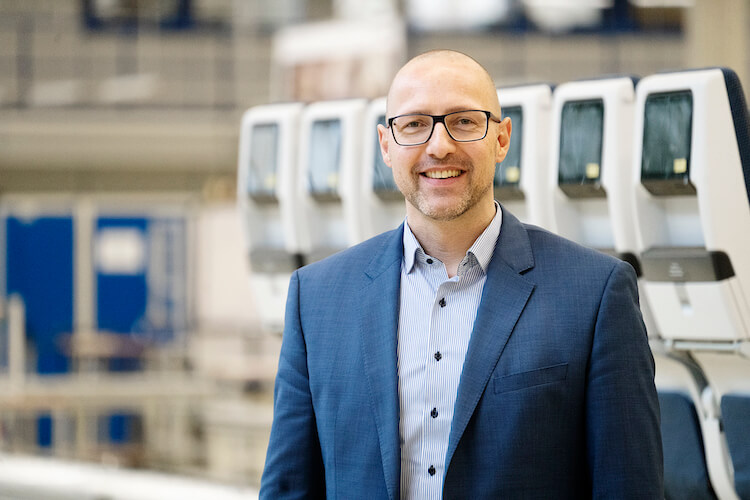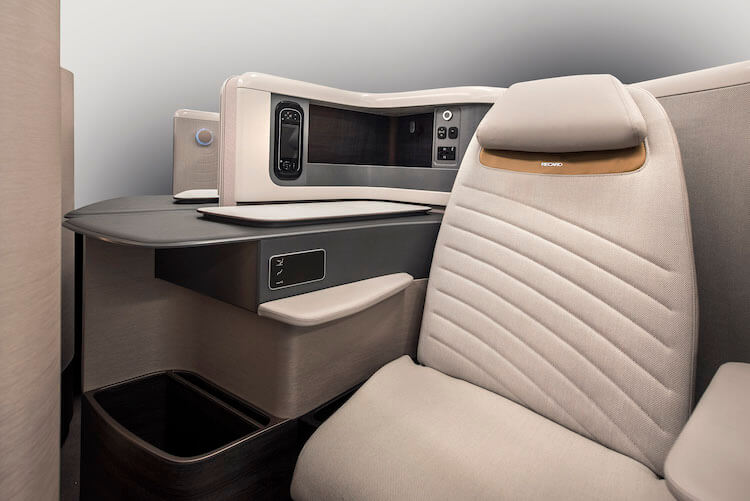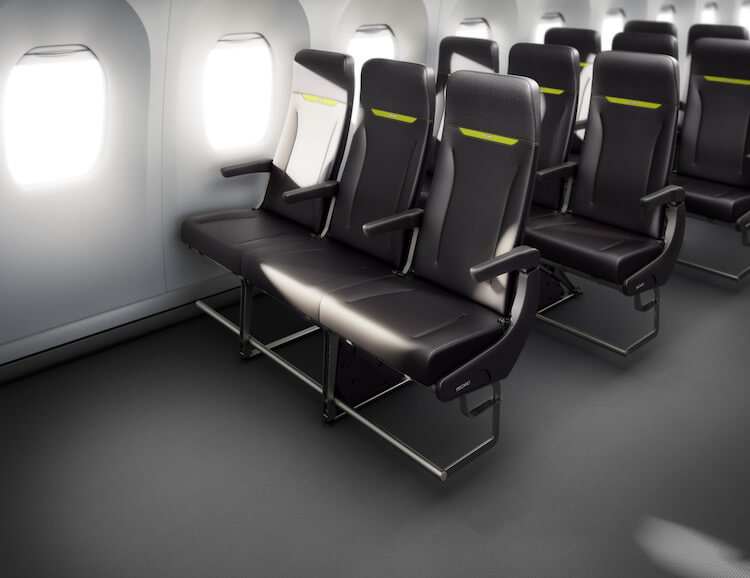Recaro weighs in
This is a special feature from PAX Tech’s September 2021 AIX Virtual digital edition, on page 48.

Markus Höllerer, Head of Strategy and Products at Recaro Aircraft Seating
Recaro Aircraft Seating this summer received theFocus Open Special Mention Award for its newest Business Class seat.The CL6720 Business Class seat was first introduced to the market in 2019 and will be flying on several airlines starting in 2022.
Sustainability was at the forefront of the design process for the Business Class seat, which resulted in the CL6720 being the lightest seat in its class by 10 to 20 percent and can help lower CO2 emissions. In this Q&A, PAX Tech speaks with Markus Höllerer, Head of Strategy and Products at Recaro Aircraft Seating, about the steps the company takes to design a product that is desirable while ticking the boxes for sustainability and lighter weight.
PAX Tech: What did Recaro do to develop a seat that is 10 to 20 percent lighter than others in the market?
Markus Höllerer: Lightweight design is not just a matter of using sophisticated materials. Lightweight starts with the concept. Let’s have a look at the backrest of our SL3710 (short-haul seat). Customers in short-haul flights do not use the recline mechanism as often, which resulted in a “pre-reclined fixed” backrest. This led to a much more simplified food tray table mechanism and removal of the expensive recline mechanism. The result was a very comfortable short-haul seat. This also led to improved privacy because the backrest did not protrude into the living space of the passenger behind.

Recaro’s CL6710 Business Class seat was on the market in 2019 and Focus Open Special Mention Award last year
The requirements for loading the various components has been reviewed and discussed carefully. A reduction of load requirement leads to less material and reduced weight. In order to make it obvious we see the seat legs of the base frame. In the past we used always the same seat leg independent on its load during crash testing or in service load. Due to a more specific definition of the load spectrum of each component, a significant amount of weight could be taken out of the seat.
Changing into a more durable material is often correlated with a more intensive process or production capability with an increase in costs. The role of the material is always combined with its availability and process stability. Moreover, the requirements of materials in the aerospace industry need special attention and control. These aspects are always considered carefully in the specific components.
PAX: Is weight the same priority for narrow body and wide body aircraft?
Höllerer: Weight has direct impact onto the performance data of any aircraft. However, due to longer distances/flight legs and the need to carry more fuel to start with, the weight sensitivity on widebody is generally rated slightly higher than on a narrow body aircraft.

The SL3710 seat brings simplicity, and comfort to short-flights
Weight has always been a major factor when seating solutions are being selected. Due to financial constraints in the industry, pricing has become more important plus other factors like superior quality and reliability of the product. The main goals are to keep the Total Cost of Ownership (TCO) as low as possible over the lifetime of the seat, while also increasing efficiency of the aircraft to save fuel and promote sustainability. Needless to say, a strong partnership with the airlines and exceptional original equipment manufacturer (OEM) performance helps to support us. Our global leadership position in Economy Class helps us to translate lightweight ideas and concepts also to Business Class which makes our Business Class solutions the lightest in the market.
PAX: What is being done in the factories to achieve the goal of less weight?
Höllerer: Based on the above-mentioned light weight design principles the tool of weight tracking and weight management is consequently done either in the basic platform projects as well as in the running customer projects. Furthermore, the internal as well as external suppliers are always welcomed if input is given about technologies, production method improvements or possible material changes with the basic goal to reduce weight and cost.
PAX: What materials are being used to develop seats that meet the demand for less weight?
Höllerer: We use a huge mix of different materials in the seats such as aerospace aluminum alloys in order to reduce specific wall thickness. The usage of thermoplastic material is mostly driven by cost and qualification challenges and contributes significantly to reduced weight of the whole seat. In cushion design, an optimized approach together with the customer needs to take place. The selection of the covers is an important factor to control the weight of the seat. Composite material is also an important topic, especially for our Business Class products, which is why we have strengthened our in-house composite capabilities at our AAT site.
PAX: Are there any materials and methods on the horizon that are being developed for making seating even lighter?
Höllerer: Recaro collaborates closely with research institutes and suppliers to develop new materials and processes. Here, we see the consequent way to invest into the development of high tensile strength aluminum alloy accompanied by reduced costs by respecting the “green footprint” and also in the development of usable and suitable magnesium alloys. The latter one has a huge chance in the low density, however the process relevant answers to decisive questions are in work.

